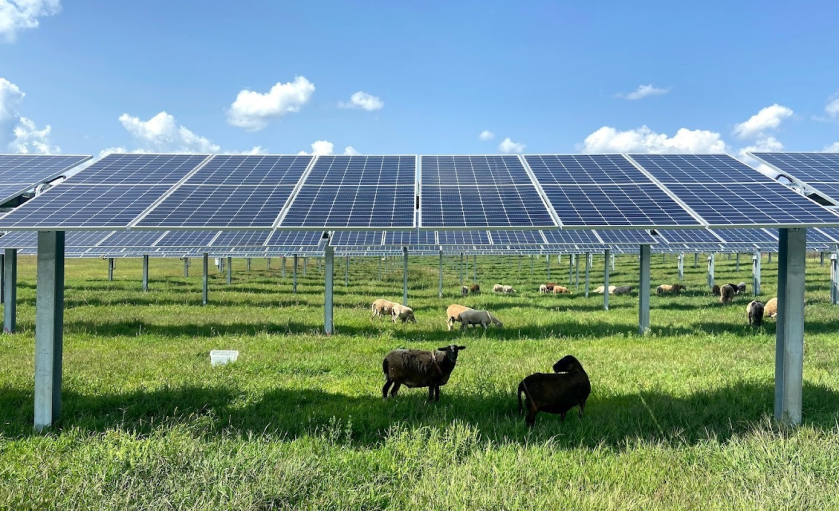Myths vs. facts
Setting the Record Straight

Solar 101 Myths
FACT: Solar power helps strengthen Wisconsin’s energy grid grid and provides a reliable, steady source of power, helping keep the lights on and power running for millions of Wisconsin homes and businesses during extreme weather. Solar panels are designed to withstand our state’s extreme weather conditions to ensure Wisconsinites have reliable power, day or night, rain or shine.
FACT: Here in Wisconsin and nationwide, an investment in solar photovoltaic energy creates an average of 1.5 times as many jobs as the same investment in fossil fuels would create.
FACT: In 2023, Wisconsin ranked 25th in the nation for installed solar, with enough capacity to power over 206,000 Wisconsin homes. However, that ranking fell by 12 spots compared to 2022, when Wisconsin ranked 13th in the nation, providing ample opportunity for growth. Over the next five years, Wisconsin is projected to add 4,049 MW of new solar capacity, and is adding over 6,000 clean energy jobs per year, helping grow our in-state solar capabilities and economy.
FACT: With 185 in-state solar companies, the solar power industry provides over 3,200 solar energy jobs for hardworking Wisconsinites across the state. Wisconsin solar jobs are projected to grow by 11.4% over the next five years. Solar power investments in Wisconsin communities currently total $1.5 billion, helping create jobs and strengthen local economies across the state.
FACT: Representing 99.4% of all Wisconsin business and employing 48.8% of employees in the state, small businesses are the backbone of Wisconsin’s economy. Solar tax credits help these small businesses save money through lower energy bills, which allows them to reinvest in themselves and grow their workforce.
FACT: Solar panels can be recycled and used to create more clean energy—or for a number of other purposes—after they have reached their end-of-life phase. Wisconsin offers multiple opportunities for solar panel recycling—ensuring that more clean energy can be created for the state. Dozens of companies across the state accept solar panels and photovoltaic (PV) systems for recycling.
FACT: Investments by the solar industry are increasing our ability to manufacture solar products here in the United States. The industry is rapidly scaling up manufacturing across the country, bringing Wisconsin communities into the fold and building robust American supply chains. For example, Siemens recently announced that it will begin manufacturing utility-scale solar power components at a Sanmina-owned manufacturing facility in Kenosha, Wisconsin beginning in 2024. Not only will the new plant help create local jobs and strengthen local economies, but it will help strengthen domestic solar energy supply chains to increase American energy independence.
Consumer Myths
FACT: The price of solar energy in Wisconsin has fallen by 43% over the last decade, making it more affordable for families and businesses across the Badger State. State and federal tax credits, incentives, and other rebates make installing solar energy cheaper than ever before. Today, solar power is the cheapest source of electricity in history, providing Wisconsin homes, businesses, public institutions, and entire communities with an affordable alternative to fossil fuels. With the increased savings from lowered electricity bills and additional incentives such as payment plans, local stipends, net metering, and solar energy system property tax exemptions, solar power systems installed in Wisconsin homes can be paid back in as little as eight years.
FACT: Wisconsin families, farmers, and businesses are struggling with the rising cost of energy and electricity bills. Solar energy helps lower these costs, while also creating jobs, powering stronger communities, strengthening our economy, and providing a reliable source of energy for Wisconsin homes and businesses. With solar panels, Wisconsin residents can save more than $900 each year on energy bills.
FACT: Rooftop solar increases Wisconsin property values. Not only does installing solar panels cut electricity costs, but it also can increase home values. Across the country, homes with solar-energy systems sold for 4.1% more on average than comparable homes without solar power.
FACT: Solar energy projects lower energy costs and electricity bills for Wisconsin families; create good-paying jobs—in construction, engineering, operations, maintenance, and more—for hardworking Wisconsinites; and help support local businesses and economies. These projects also strengthen the state’s energy independence. Wisconsin communities also benefit from increased tax revenue, while households and businesses save money thanks to tax credits that make installing solar systems cheaper.
FACT: Actually, solar power cuts costs for local governments, providing savings that can help fund schools, fire departments, infrastructure, and more. Additionally, Wisconsin schools rely on solar to power hundreds of schools across the state while cutting energy costs. Programs such as Solar on Schools have helped Wisconsin schools become more energy independent, and school districts in Wisconsin that have switched to solar are saving millions of dollars. Over 200 schools in Wisconsin have installed solar energy, saving thousands with each system after installation.
FACT: Solar panels are safe and play an instrumental role in providing Wisconsinites with clean, healthy air. Reducing carbon pollution is key to improving air quality in our communities and solar energy is critical to making that happen.
FACT: There is broad support for clean energy development among Wisconsinites. According to a poll, 65% of Wisconsin voters support would like to see Wisconsin produce more energy from clean energy sources like solar power compared to only 8% who want to see the state produce less clean energy.
Farm Lands Myths
FACT: Wisconsin farmers, ranchers, and landowners can reduce energy bills and make money by leasing unused land for solar energy projects. Across the state, farmers, ranchers, and landowners have made hundreds of thousands of dollars by working with solar companies and leasing their land for new solar projects. Converting land to a solar farm could help generate around $1,200 to $1,500 per acre per year. Agrivoltaics—the use of land for both agriculture and solar energy generation—can also help improve crop productivity and minimize water use. A new solar farm under development on University of Wisconsin-owned land will provide a “laboratory for a multi-disciplinary study on agrivoltaics,” helping maximize the use and economic potential of farmland for Wisconsin farmers.
FACT: Many solar projects are developed in rural parts of the state, bringing economic benefits to rural Wisconsin communities that remain economically challenged. Solar projects provide increased tax revenue, new job creation, and income for local businesses in these communities. Tax revenue from large-scale solar arrays also provides critical funding for rural towns and communities that can support local schools, infrastructure, public services, and other community needs.
FACT: Wisconsin’s solar power industry is working to expand access to solar in low-income communities. For example, the Bluff Prairie Community Solar Farm in rural southwestern Wisconsin will help make solar power even more affordable and accessible for low-income Wisconsin homes and families. Under the new project, participating homes will see an annual energy savings of $56 per panel, with homes receiving between one and five panels. The first-of-its-kind program in the state will help alleviate the higher burden energy costs create for low-income households.
FEATURE | TOOLKIT
Toolkit

